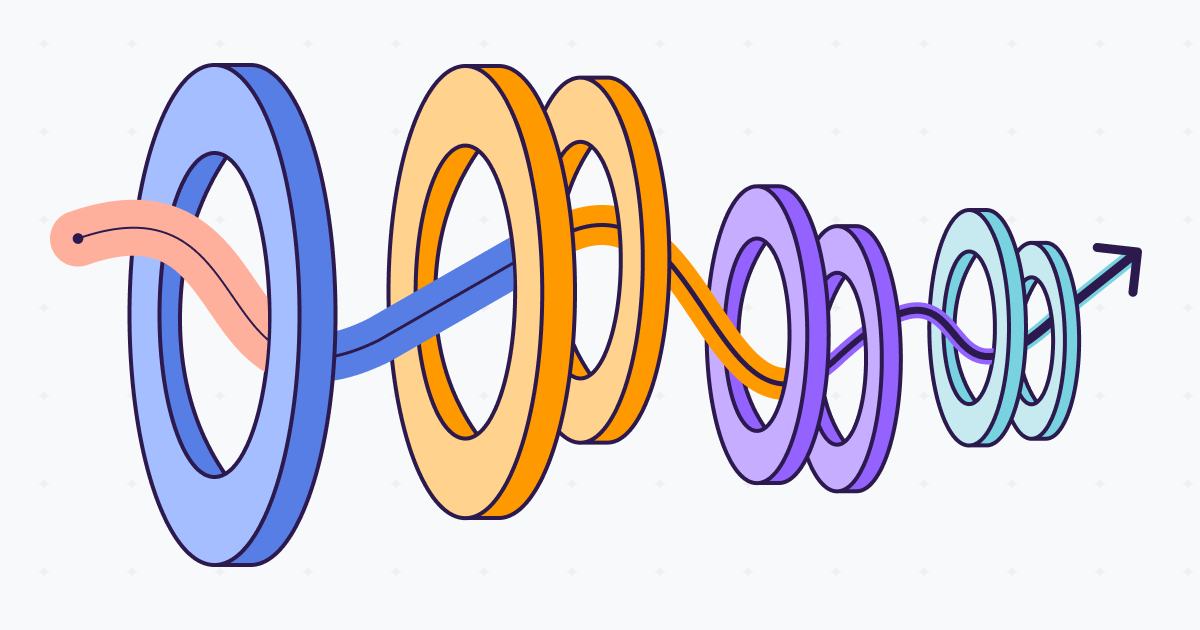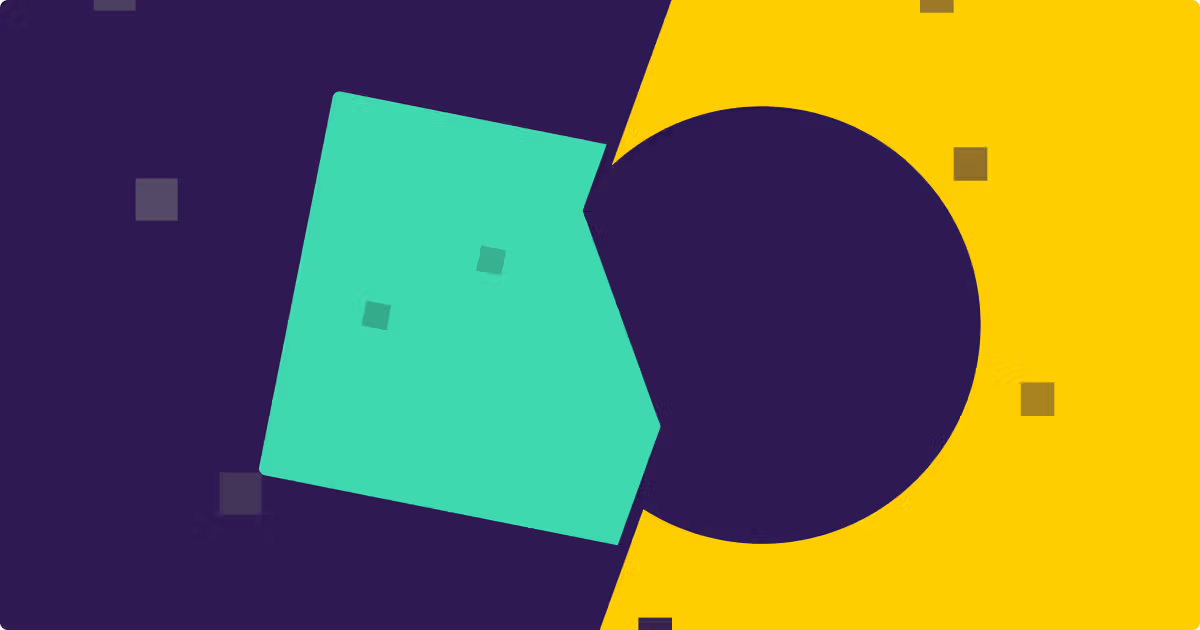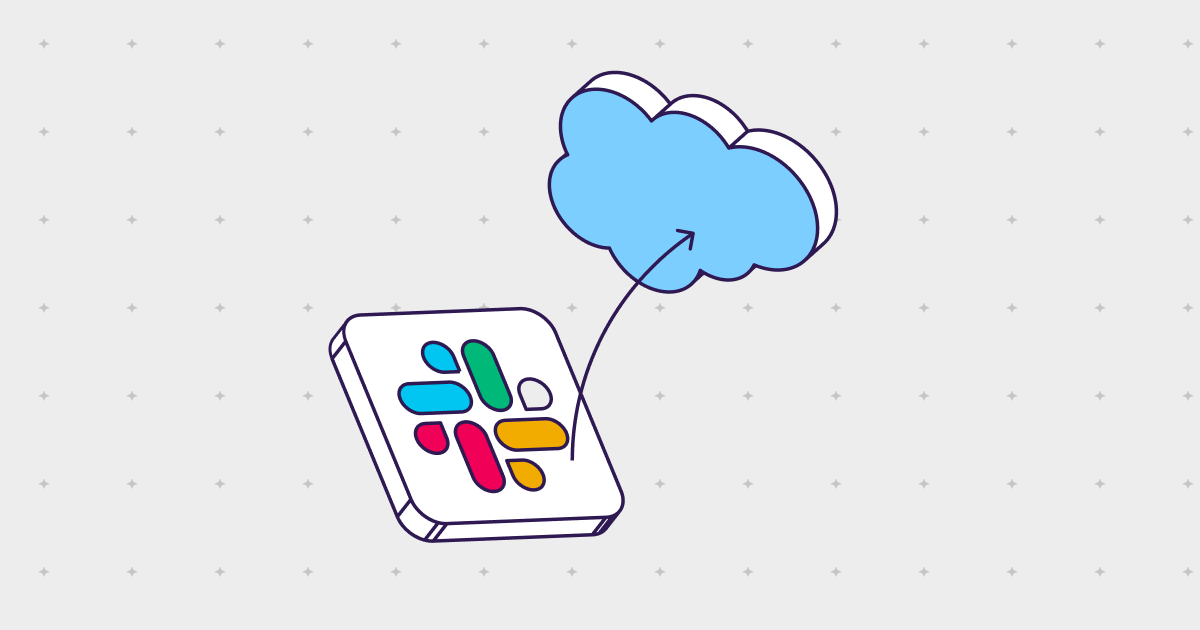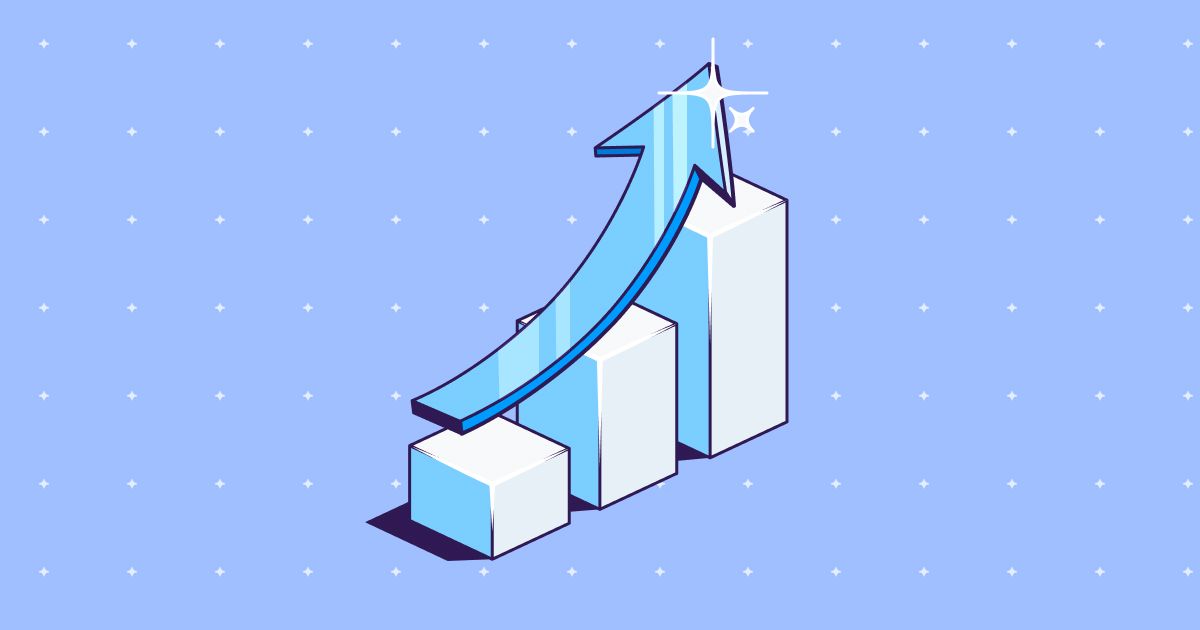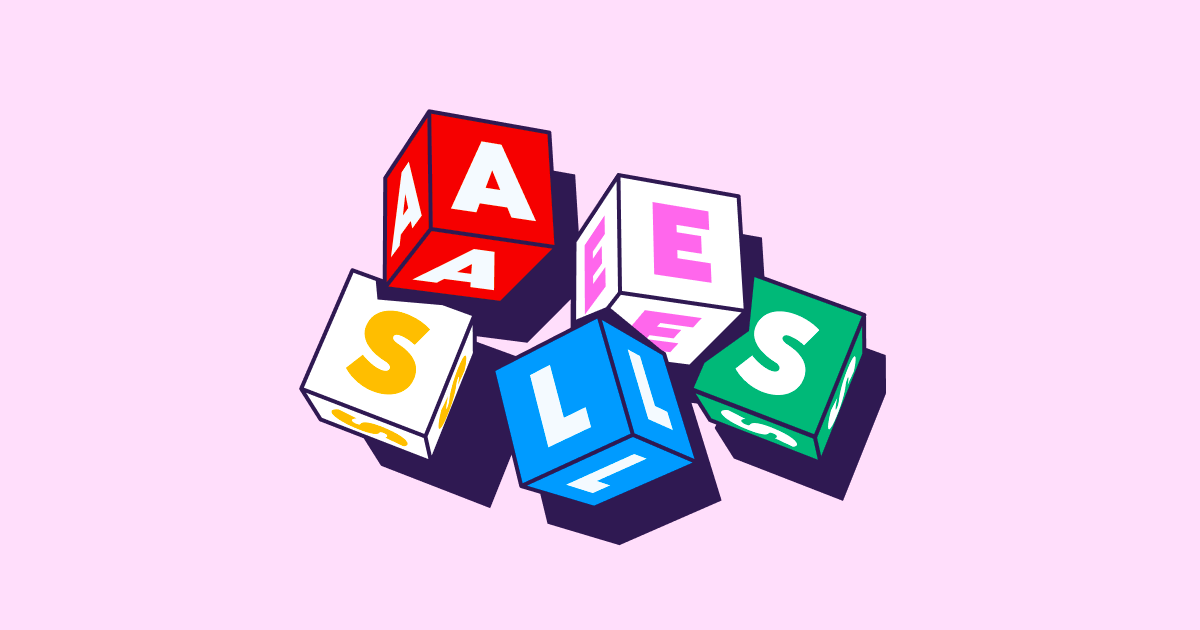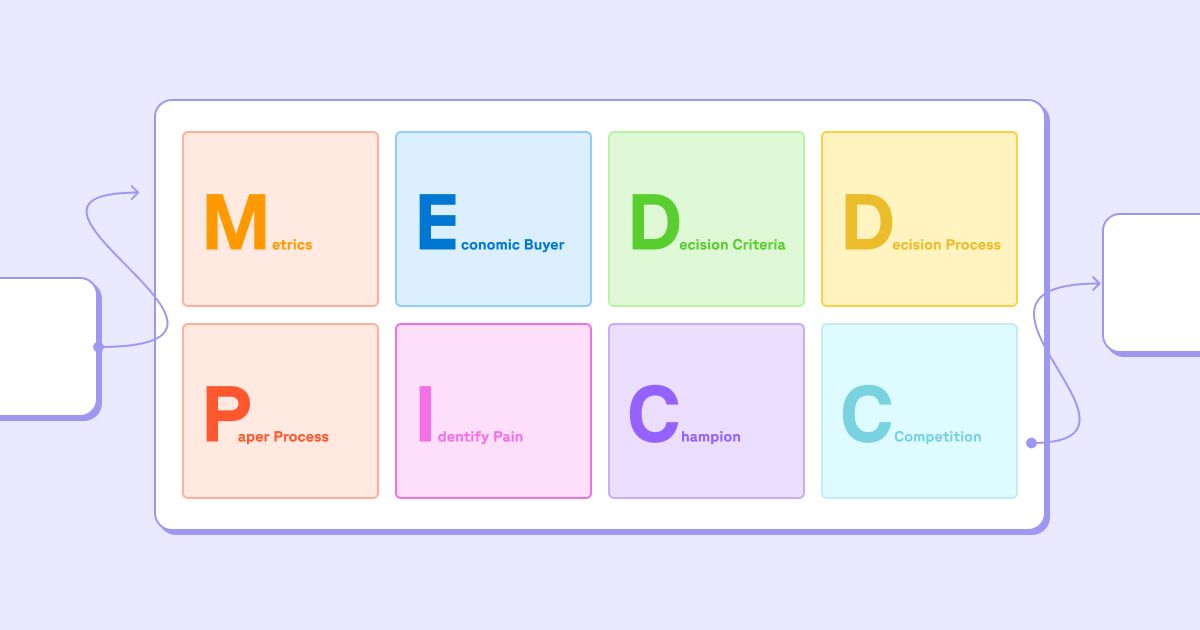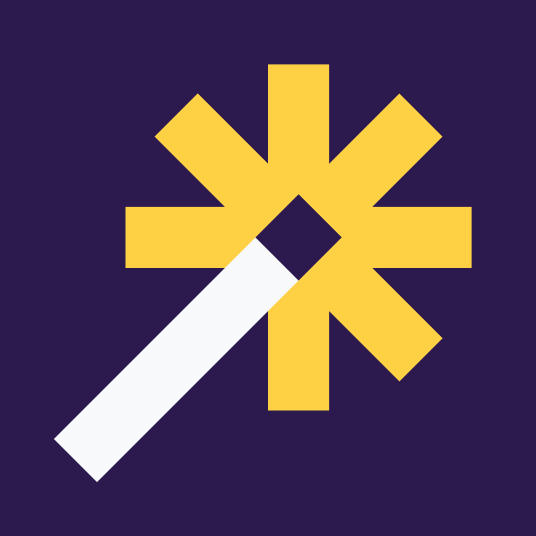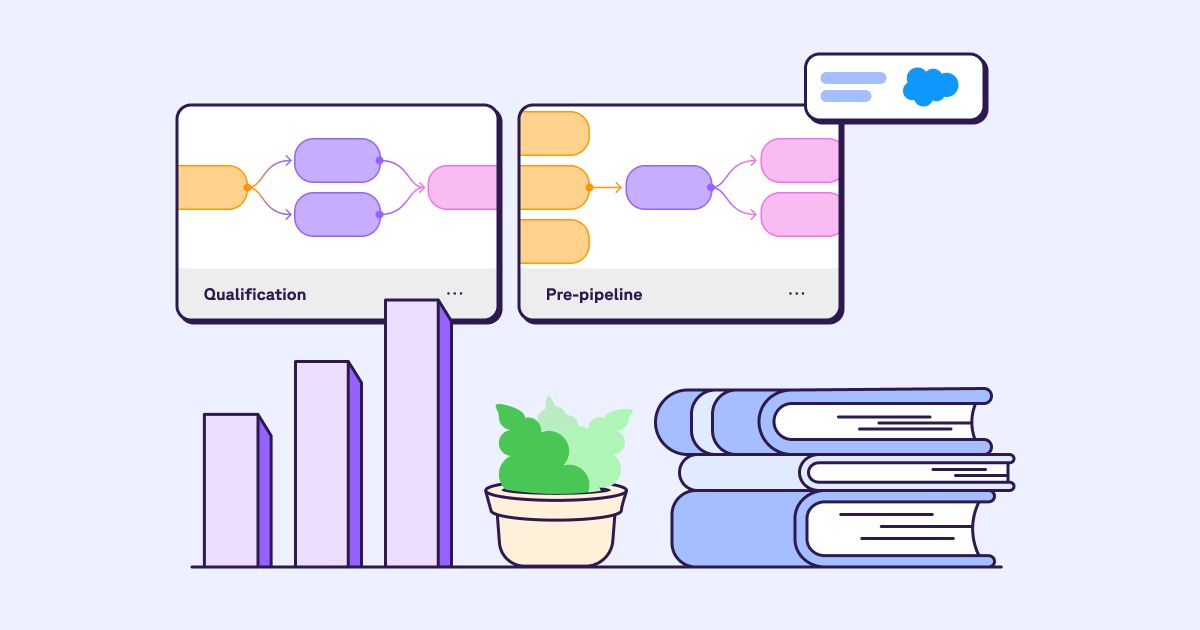
When you work for a B2B or “business-to-business” company, you’re selling a product or service targeted for another business rather than an individual customer. (That would be a B2C company). Given the nature of the transactions, B2B sales often involve larger quantities, higher order values, and more complex decision-making processes compared to B2C transactions. The focus in B2B relationships is on meeting the specific requirements of other businesses, building long-term partnerships, and delivering value that contributes to the success of both parties.
Many B2B companies use the B2B sales funnel model as a way to track potential customers as they move through the buying journey, from initial awareness to final conversion. It outlines the steps a buyer typically takes when considering a B2B purchase and provides a framework for sales and marketing teams to nurture leads, build relationships, and ultimately close deals.
In this article, we’ll outline how a B2B sales funnel works, the key phases of the funnel, and additional considerations you should take when evaluating your customer’s journey.
What is a B2B Sales Funnel?
To put it simply, a B2B (business-to-business) sales funnel is a visual representation or a conceptual model that illustrates the step-by-step process a company uses to convert potential business customers into paying clients. It maps out the customer journey from initial contact to the final sale, providing a framework for understanding and optimizing the sales process. Depending on your specific industry or product offering, you may be more focused on specific stages of the funnel. Or you may add or remove stages, if that makes more sense for your target audience.
The B2B sales funnel typically consists of several stages or phases that reflect the buyer's progression through the sales cycle. While the specific stages may vary depending on the organization, industry, or product/service, a common B2B sales funnel structure includes the following phases: Awareness, Lead Generation, Qualification, Evaluation and Consideration, Proposal and Negotiation, Closing, and Post-Sale Relationship.
It’s worth noting that the B2B buyer's journey is often complex and involves multiple decision-makers and influencers within the organization. With that in mind, this process can take a significant amount of time. There is no set amount of time that each customer will spend in a specific stage of this funnel. However, effective marketing and sales strategies recognize the buyer's journey, align content and messaging with each stage, and provide the necessary information and support to address buyer needs at every step. By understanding the buyer's journey, B2B companies can better engage potential customers, build relationships, and ultimately increase the likelihood of successful conversions.
What are the key milestones of a B2B Sales Funnel?
A common B2B sales funnel structure includes the following phases: Awareness, Lead Generation, Qualification, Evaluation and Consideration, Proposal and Negotiation, Closing, and Post-Sale Relationship. Of course, these may vary depending on your specific customers as well their needs, resources, and other factors, however, here are the seven most common stages in order:
Stage 1: Awareness
This is the first stage of the funnel and is often referenced as being part of the top of the funnel. At this point, potential customers become aware of your company and its offerings. While the sales team may not be involved here, the marketing team usually creates strategies designed to help increase awareness that may involve creating content, developing ads, sharing on social media, or attending industry events, to generate leads and attract prospects. A big part of the awareness stage is simply generating attention around the brand so that potential customers begin to recognize your company as being familiar and recognizable.
Stage 2: Lead Generation
When the awareness phase is successful, interested parties become leads. Leads are usually generated by capturing the contact information of potential customers who have shown interest in your product or service. This can be done through forms on your website, email subscriptions, or other lead generation tactics.
Stage 3: Qualification
Once leads are acquired, they need to be qualified to determine their fit as potential customers. This involves assessing their needs, budget, decision-making authority, and readiness to purchase. The goal is to prioritize leads and focus on those most likely to convert into customers.
Stage 4: Evaluation and Consideration
At this point, qualified leads engage in a more in-depth evaluation of your offerings. They may request demos, ask questions, compare features, review pricing options, or seek testimonials and references. Some companies offer a free trial to help these qualified leads gain a deeper understanding of the product. Sales teams work closely with leads to address their concerns and provide the necessary information to move them closer to a decision. At this stage, the sales and marketing teams usually focus more on the product itself – instead of the brand – as it's crucial that a potential buyer see the product as a solution to an issue they’re facing.
Stage 5: Proposal and Negotiation
If a lead shows strong interest, a formal proposal is often presented, outlining the specific terms, pricing, and deliverables associated with the product or service. Negotiations may take place to find mutually agreeable terms, such as pricing adjustments, customization, or contractual arrangements.
Stage 6: Closing
Perhaps the most exciting milestone comes when the deal finalizes and converts the prospect into a paying customer. This phase typically includes contract signing, payment processing, and any necessary legal or administrative steps. But of course, the process isn’t over yet.
Stage 7: Post-Sale Relationship
After the sale, maintaining a positive relationship with the customer is crucial for customer satisfaction, loyalty, and potential upselling or cross-selling opportunities. Ongoing customer support, onboarding, and account management activities are carried out to ensure customer success. Remember: you’ll want to keep existing customers happy so they remain loyal to your company. Plus, they may help you identify new leads when they share their thoughts on your product with friends and colleagues in the industry.
By following the B2B sales funnel, businesses can streamline their sales processes, ensure a consistent and customer-focused approach, and increase the likelihood of converting leads into loyal, long-term customers. It also facilitates the alignment of marketing and sales teams, enabling better collaboration and a more comprehensive understanding of the customer journey. Ultimately, the goal of a B2B sales funnel is to maximize sales efficiency, revenue generation, and overall business success. If you are looking for examples of specific sales funnels, be sure to check out these templates that were developed for a number of different use cases including lead routing and management, SaaS sales, and customer success.
Now that you have a strong understanding of a B2B sales funnel, you can craft specific strategies designed to improve KPIs at each stage. If you’re using Salesforce as your CRM, you may be interested in adding Sweep to your tech stack. Sweep is a no-code configuration tool designed to help B2B companies customize and scale the way their teams are using Salesforce, without the dev time. Whether you’re a Salesforce pro, or you’re new to the platform, Sweep allows you to create and manage your CRM processes, rules, and automations visually with intuitive drag-and-drop tools. Visit sweep.io to book a demo today.

